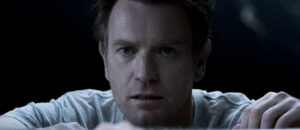Mary Queen of Scots
Movie Rating:
3
Historical revisionism is hardly new, going back to the earliest works of poetry and drama. Even contemporary Elizabethan tales reshaped the age into something poetic and mythic. Keeping with this tradition, longtime theater director Josie Rourke, along with scribe Beau Willimon (House of Cards), have crafted a film in Mary Queen of Scots that broadly uses the lives of Queen Elizabeth I and Mary Stuart to serve broader, more allegorical ends.
Saoirse Ronan plays the fiery Mary, who returns to Scotland after her French husband’s passing. The 18-year-old is keen to re-establish her role in court, which fosters resentment from both the Protestants who reject her Papist leanings and a brother who had been ruling in her stead.
Meanwhile, down in England, Elizabeth (Margo Robbie) is equally beset in her court by various lords pushing for a stop to Mary’s rise, especially given the Tudor/Stewart divide and questions about succession and rightful rule of the realm.
This is a tale oft told, ripe for finding a new way to do so. The hook is that this film actively mines the feminist ambitions of both rulers. Each seeks justice for many rather than the Machiavellian, selfish drives of their male colleagues. The filmmakers also populate the court with many complexions, diverging from historical record but creating a more eclectic take than the usual monochromatic casting. It also has dalliances that deal with differing sexualities, some of which are treated with a sensitivity that’s welcome if decidedly anachronistic.
The issue with the film isn’t these broad divergences from history. In many ways, they make Mary Queen of Scots more interesting than it would be otherwise. Instead, and unfortunately, these disparate elements don’t quite add up the way they’re meant to. The two regents appear weak and unstrategic, consistently buttressed by the actions of those around them (almost all men) while they talk of their power rather than actually executing it. At times of military conflict, Mary is shown to be little more than a bystander who only steps in when deciding to pardon someone who surely would be in her pragmatic interest to finish off.
Elizabeth is also shown as consistently vulnerable and fickle, masked by thick white paint to hide the scars of her pox. She’s presented as a paranoid and lonely woman whose attempts to cajole Mary fail time after time. Mary, meanwhile, is pushed by the winds around her, never quite grasping the forces out to get her despite flourishes of wide-eyed proclamations.
These are two of the most formidable rulers in the history of Britain, and here they often come across as aimless and self-serving, swayed by those more cunning in their courts. In attempting to provide a richer picture, it’s a diminished one. Despite all the pageantry, costumes, and prosaic pronouncements, it feels like this sideway glance at the history of these two woman can’t do justice to the complexity of their situation, be it in terms of politics, gender, religion and other such powerful contributing attributes that shaped their lives.
One need only look to this year’s The Favourite to find a far more absurd yet profoundly more acerbic and effective look at both the ferocity and fickle nature of courtly life. The comparisons are surely weighted to Yorgos Lanthimos’ regal romp, in terms of cinematic craft, deftness of performance, and sheer acidity of dialogue and action.
There’s enough going on in Mary Queen of Scots to recommend to fans of both Ronan and Robbie. The film has plenty of scene chewing and wide-eyed retorts to tickle any Royalphile. However, despite these broad asides and wanderings away from fact, there’s not much meat left on the bone when all is said and done. The small sense we get of these great women isn’t enough to overcome the limitations of the telling.



